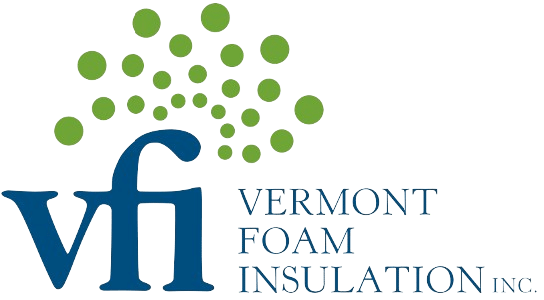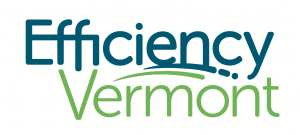Does a glittering row of icicles form along your home’s eaves every winter? It’s a pretty picture, but icicles can be a bad sign for Vermont and New Hampshire homeowners.
Icicles on your eaves indicate that an ice dam has formed, a common winter problem that can cause serious damage to your home. Let’s take a look at how ice dams form and how an experienced spray foam insulation company like Vermont Foam Insulation can solve the problem.
Ice Dams Mean Your Attic Is Under-Insulated
When you don’t have enough attic insulation, heat from your living spaces will travel up into your attic and out of your home. The escaped heat will warm up your roof on its way out, and any snow that has accumulated on your roof will melt.
Now, you have water running off your roof. When that water reaches the edges of your roof, where the shingles are colder, it will refreeze. This creates a ridge—called an ice dam—that blocks future snowmelt from draining into your gutters and away from your home. As more snow melts and the ice dam grows, icicles start to form. Icicles can cause damage to your home, and falling icicles pose a threat to anything or anyone that’s underneath them. But icicles aren’t the only problem ice dams cause.
Eventually, the ice dams will be large enough to block melting snow from reaching the parts of your roof that are cold enough to refreeze it, and pools of standing water will form behind them. Standing water on your roof is never good—as it builds up, water will seep its way into even the most minuscule cracks in your roofing and seep down into your attic.
Moisture in your attic can:
-
Cause mold and mildew growth, which can make your family sick
-
Rot and warp building materials, potentially leading to structural damage
-
Ruin any insulation you do have in your attic, which will then have to be removed
Attic Insulation Is the Best Way to Prevent Ice Dams
Creating a properly sealed and insulated barrier between your heated living spaces and your attic will stop ice dams from forming. A combination of spray foam insulation and loose-fill cellulose insulation is ideal for this project. Spray foam insulation is a highly effective insulation material that seals out air and moisture in addition to stopping heat transfer. Loose-fill cellulose insulation is blown in over the attic floor to further reduce heat transfer. A properly insulated attic will:
-
Stop ice dams from forming
-
Prevent heat loss and energy waste
-
Make your home more energy efficient
-
Make your home more comfortable
-
Help you save money on heating bills
Save Money on Your Attic Upgrade With Insulation Rebates
Did you know insulation upgrades can qualify you for rebates through programs like Efficiency Vermont and Home Performance with ENERGY STAR®? Qualified homeowners can save up to $3,000!
Vermont Foam Insulation is an Efficiency Excellence Network contractor with Efficiency Vermont and a partner with the Home Performance with ENERGY STAR® program. We can help you find and apply for the insulation rebates that your project qualifies for, making it as affordable as possible to upgrade your home.
Since 2006, we’ve helped homeowners in Chester, Manchester, Brattleboro, Landgrove, and many other Vermont and New Hampshire communities make their homes more comfortable and energy efficient with professional insulation installation. If you’re looking for a local spray foam insulation contractor to solve your ice dam problem, give Vermont Foam Insulation a call today!








